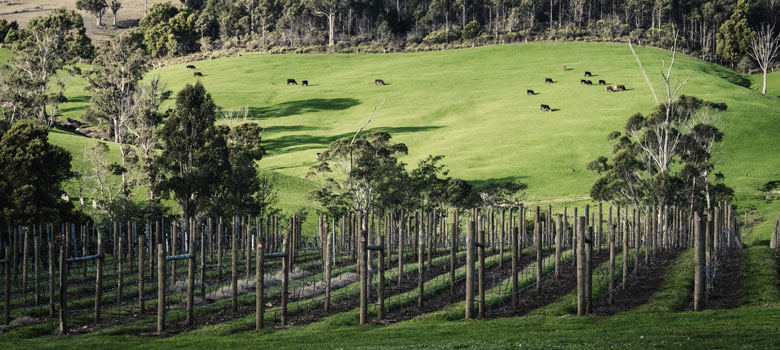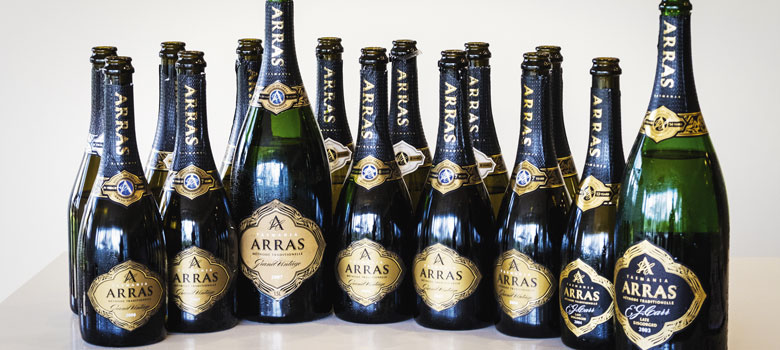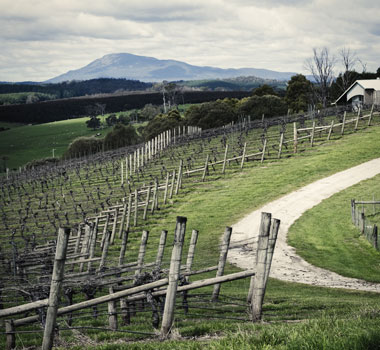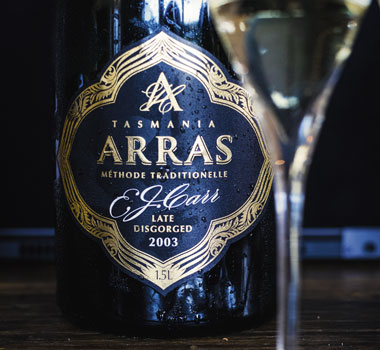
Wine
House of Arras: Cult Wines and Legends
House of Arras started as an idea sitting on top of an ambition. The ambition was to create Australian Sparkling wine that could rival the great wines from Champagne, and the idea was to build a brand whose identity was Australian and synonymous with world class quality.
A lofty aspiration considering the Champenois have been crafting wine since the fifth century and Australia’s Sparkling identity is less than 200 years old and built on the popped corks of Barossa Pearl and Seaview.
But this was the 80s and as our thirst for quality bubbles increased, producers started searching for cool sites to create the austere base wines from which refined bubbles develop.
Moët was settling into the Yarra as Domaine Chandon, Brian Croser was colluding with Bollinger at Petaluma’s Adelaide Hills headquarters and Louis Roederer was building Jansz with Heemskerk in northern Tasmania, adding to the great work by Dr Andrew Pirie and Stefano Lubiana.
Arras begins

So, in 1995, Ed Carr, head of the Sparkling team at Accolade (then Hardys) set about building Arras and in 1998 released a wine. It was a 1995 vintage Tasmanian and Yarra fruited Chardonnay Pinot Noir and it received significant praise.
That wine started a journey that 23 years on sees the idea and ambition realised. House of Arras now has a formidable range and is Australia’s most revered Sparkling producer with nearly 60 trophies and 667 medals.
Ed Carr

As the cache of Arras has grown, so too has the reputation of Accolade’s group Sparkling winemaker and Arras architect Ed Carr. Starting as a microbiologist, Ed has been making wine for 34 years with 27 of those focused on Sparkling.
Ed is widely considered Australia’s greatest fizz maker and his awards and achievements stack high. He has won over 80 winemaking trophies, 2300 wine show awards and consistently wins ‘Best Sparkling of Show.’ He has twice been named winemaker of the year, and is labelled a genius by James Halliday.
In person, Ed is a true gentleman: polite, softly spoken, patient and humble. For a guy who has produced some of the best wine Australia has seen, he is refreshingly unaffected, open and generous.
His passion for his craft is obvious and at a recent tasting of his range, his genuine delight in his and his team’s achievements shone through.
“It was a gentle evolution, but we didn’t envision coming this far,” Ed said. “We always dreamt we could do something special, but the brand has grown to international standing and it all evolved through one Method Traditional wine.”
Time, patience and precision


“One thing we really started to see very early on was the longevity of these wines,” Ed reflected. “That’s when we decided that if we really wanted to be of a world quality, then we had to be of equivalent age to the current release Champagnes or we were just wasting our time.
“Commercially, it’s a hard graft, there’s a lot of investment and time and so the fact we have evolved to multiple numbers of wines shows we’re doing well.”
When it comes to the wine game, ‘doing well’ is no mean feat. But when it comes to Sparkling wine made traditionally with two fermentations and extended time on lees (the flavour building dead yeast left behind after fermentation) the investment equation in time, money, energy and focus multiplies considerably.
To put this into perspective, the Arras Méthode Traditionelle entry point is Brut Elite and is a non-vintage wine aged in the bottle for three years before release. From there, the time-patience-money curve steepens until you arrive at the top with the 2001 late disgorged, museum release Blanc De Blancs that has spent 17 years in bottle building layer upon layer of flavour.
Keen to find out which House of Arras wines were tasted? Check out the Nov/Dec issue of Selector to read the full article.